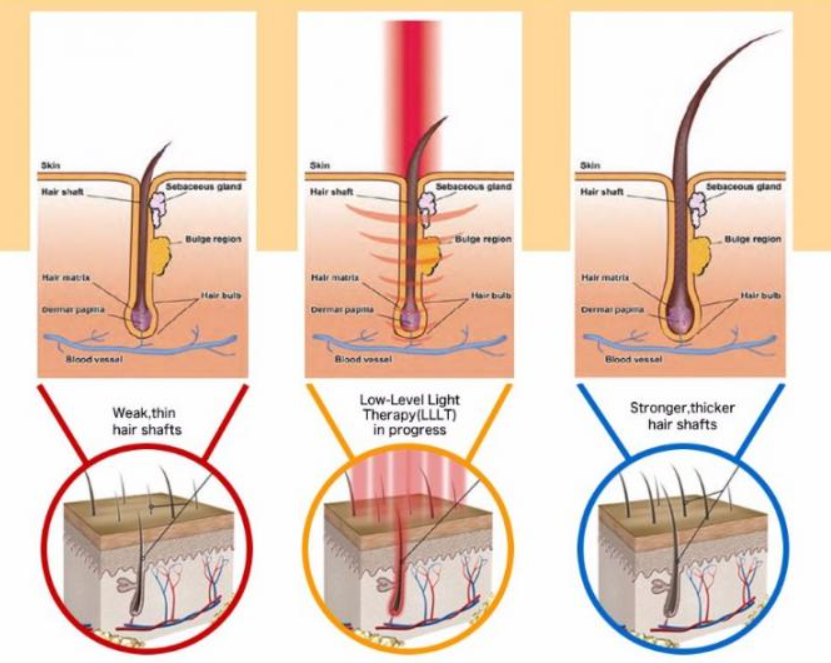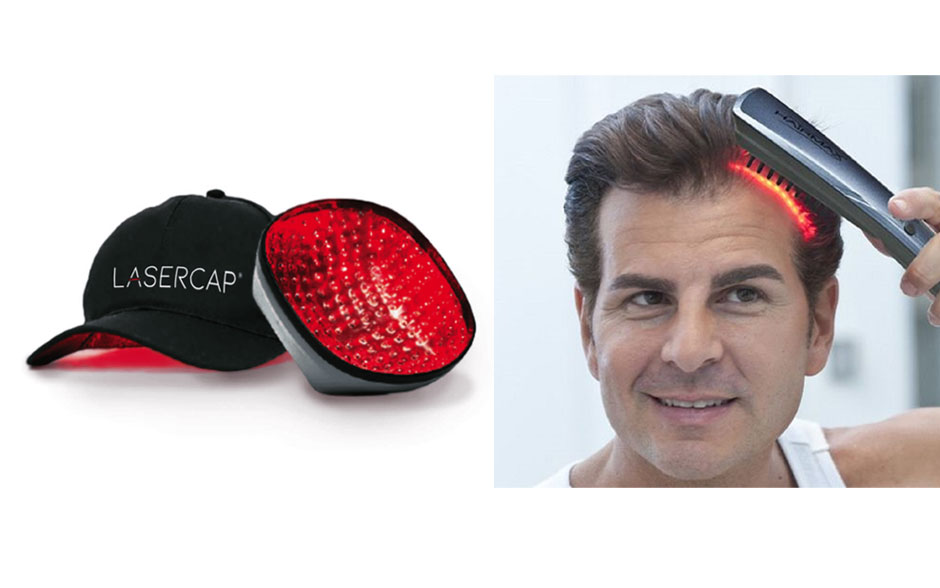Hair loss can be a frustrating and embarrassing problem for many people. Fortunately, there are many treatments available in the market today, including laser therapy for hair growth. This innovative solution has gained popularity over the years for its ability to promote hair growth without surgery or medication. In this article, we will explore how laser therapy for hair growth works, its benefits, and some frequently asked questions about this treatment.
Laser Therapy for Hair Growth
Hair loss is a common problem that affects both men and women. It can be caused by a variety of factors, including genetics, age, hormonal changes, and medical conditions. While there are many treatments available for hair loss, laser therapy has emerged as a promising option for those looking to promote hair growth.
What is Laser Therapy?
Laser therapy for hair growth, also known as low-level laser therapy (LLLT), involves the use of low-powered lasers or light-emitting diodes (LEDs) to stimulate hair growth. The treatment works by delivering light energy to the hair follicles, which in turn increases blood flow and oxygenation to the scalp.
How Does Laser Therapy Work?

Laser therapy works by stimulating the hair follicles at a cellular level. The light energy from the lasers or LEDs is absorbed by the mitochondria in the cells, which helps to increase their energy production. This increased energy production then helps to promote cell growth and repair, which can lead to increased hair growth.
What are the Benefits of Laser Therapy for Hair Growth?
There are many benefits to using laser therapy for hair growth, including:
- Non-Invasive: Laser therapy is a non-invasive treatment that does not require any surgery or medication. This makes it a safe and convenient option for those looking to promote hair growth.
- Effective: Studies have shown that laser therapy can be an effective treatment for hair loss. In one study, 85% of participants who underwent laser therapy showed an increase in hair density.
- Minimal Side Effects: Laser therapy is a safe treatment with minimal side effects. The most common side effect is mild scalp irritation, which usually resolves on its own.
- Affordable: Compared to other hair loss treatments, laser therapy is a relatively affordable option.
- Convenient: Laser therapy can be done in the comfort of your own home with a portable laser device. This makes it a convenient option for those with busy schedules.
Who is a Good Candidate for Laser Therapy?
Laser therapy is a safe and effective treatment option for most people experiencing hair loss. However, it may not be suitable for everyone. You should consult with a healthcare professional to determine if laser therapy is right for you.
People who may be good candidates for laser therapy include those who:
- Have early-stage hair loss.
- Have androgenetic alopecia (male or female pattern baldness).
- Have alopecia areata (an autoimmune disorder that causes hair loss).
- Have undergone chemotherapy and experienced hair loss as a result.
- Are not pregnant or breastfeeding.
What are the Different Types of Laser Devices?

There are several types of laser devices available for hair growth, including:
- Handheld devices: These are portable devices that can be used at home. They are easy to use and typically require daily use for several months to see results.
- In-office devices: These are larger devices that are used in a clinical setting. They typically require fewer treatments than handheld devices.
- Laser caps: These are caps that are worn on the head and contain lasers or LEDs. They are a convenient option for those who do not want to hold a device for an extended period of time.
- Laser combs: These are combs that contain lasers or LEDs. They are easy to use and can be used to target specific areas of the scalp.
How to Use Laser Therapy for Hair Growth?
If you are considering using laser therapy for hair growth, here are some tips on how to use it effectively:
- Consult with a healthcare professional to determine if laser therapy is right for you.
- Choose the right type of laser device for your needs.
- Use the device as directed. Most devices require daily use for several months to see results
- Part your hair and move the device over the scalp in a slow, steady motion, making sure to cover all areas of the scalp.
- Use the device for the recommended amount of time. Most devices require 10-15 minutes per treatment session.
- Be patient. It may take several months to see noticeable results.
- Use the device consistently. Regular use is key to achieving optimal results.
What are the Potential Side Effects of Laser Therapy?
Laser therapy is generally safe and well-tolerated. However, like any medical treatment, there may be potential side effects. The most common side effect is mild scalp irritation, which usually resolves on its own. In rare cases, laser therapy may cause temporary hair shedding, but this is typically a sign that the treatment is working and new hair growth is on the way.
It is important to note that laser therapy should not be used on open wounds or infections of the scalp. If you experience any unusual side effects or discomfort during treatment, you should stop using the device and consult with a healthcare professional.
Final words:
Laser therapy for hair growth is a safe, effective, and non-invasive treatment option for those looking to promote hair growth. It works by stimulating the hair follicles at a cellular level, which can lead to increased hair growth and thickness. There are many different types of laser devices available, including handheld devices, in-office devices, laser caps, and laser combs. When using laser therapy, it is important to choose the right type of device for your needs and use it consistently for optimal results. While laser therapy may not work for everyone, it is a promising option for those struggling with hair loss.
In conclusion, if you are considering laser therapy for hair growth, consult with a healthcare professional to determine if it is right for you. With regular use and patience, laser therapy can help you achieve a fuller, healthier head of hair.
